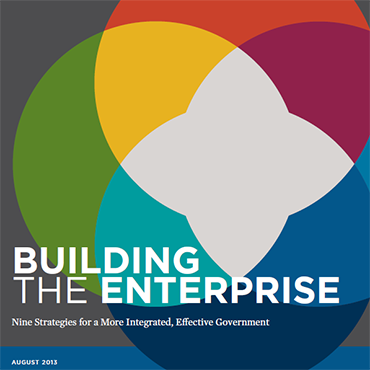Making crisis-level collaboration the new normal

The Partnership for Public Service has some ideas to enable agencies to work together all the time as well as they do when under pressure.

Government has a knack for coming together in times of crisis, when the klieg lights are on and an emergency is unfolding. The Partnership for Public Service wants to see some of that alacrity and sense of purpose to government operations on a day-to-day basis.
In a new report, "Building the Enterprise: Nine Strategies for a More Integrated, Effective Government," the Partnership and Booz Allen Hamilton recommend building on reforms detailed in the Government Performance and Results Act of 1993 and its successor, the Government Performance and Results Modernization Act of 2010. "The outcome we seek is a federal government that acts as a single, integrated enterprise -- not a set of disconnected agencies and programs -- in taking on its biggest challenges," the report states.
The authors advocate developing a goal-oriented approach, with portfolios built along the lines of the current cross-agency goals, and with senior officials having the responsibility to deliver on those goals as their primary job function. To support this, the executive branch should rethink the way it evaluates executive performance, and set a career path for executives to work on cross-cutting missions across multiple agencies and departments.
On the acquisitions and resources side, the report recommends taking shared services to scale, managing IT across enterprises -- including government-wide software licensing -- and centralizing acquisition across agencies where possible.
The Partnership hosted an Aug. 8 event at its Washington, D.C., headquarters to discuss the new report with a panel of senior officials. Beth McGrath, deputy chief management officer at the Department of Defense, said transparency and common data standards would be key to accomplishing some of the workforce and procurement performance goals.. She also noted that while government can galvanize across agency lines in a crisis, normal checks and balances built into the system can "slow us down in our ability to execute."
While the Partnership's recommendations are designed to be driven by the executive branch, Comptroller General Gene Dodaro, who leads the Government Accountability Office, said the report's concepts "cannot be effectively implemented without better consultation with Congress." But Dodaro sees the spending caps under the Budget Control Act and the demographic crunch that will strain entitlement spending as helping to focus all branches on the benefits of effective management.
The report was prepared with the contributions of current and former senior officials, including federal CIO Steven VanRoekel, former Office of Personnel Management Director John Berry, acting Commissioner of the Internal Revenue Service Danny Werfel and General Services Administrator Dan Tangherlini. But Max Stier, president and CEO of the Partnership for Public Service, stressed that "no single person has ownership of any specific recommendations."
Stier added that he hoped the report would help drive the conversation now under way in the administration about redefining its management agenda with a focus on technology and evidence-based decision making.
NEXT STORY: FITARA's CIO vision clashes with DHS's approach






